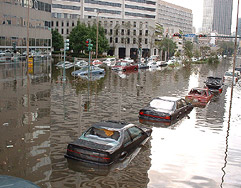A major challenge to renewable energy development is the virtual lack of storage capacity on the U.S. electrical grid. Researchers are developing new batteries capable of delivering stored solar- and wind-generated electricity when sunlight and wind are in short supply. But the fossil fuel required to build these storage technologies could outweigh the environmental benefits of installing new solar and wind farms, says Stanford postdoc Charlie Barnhart of the Global Climate and Energy Project (GCEP). One way to make grid-scale batteries greener, Barnhart says, is to dramatically increase their cycle life so that they can store and deliver clean electricity for decades.
For more information visit the GCEP website: http://gcep.stanford.edu
Tags: carbon footprint, Charlie Barnhart, GCEP, Global Climate and Energy Project, Grid Energy Storage, Renewable Energy, Stanford University






 RSS Feed
RSS Feed